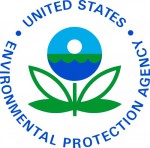EPA Announces $3 Billion in New Funding for States to Reduce Lead in Drinking Water
Additionally, $1.1 Billion of Unused Funding Redistributed for States
WASHINGTON – Today, U.S. Environmental Protection Agency (EPA) announced $3 billion in new funding for states through the State Revolving Fund (SRF) programs to reduce exposure to lead in drinking water. EPA conducted a thorough review of previously awarded funding and assessed updated lead service line data to increase accountability and ensure funds are properly distributed to achieve maximum impact in removing lead pipes and reducing lead contamination in drinking water systems. This funding will accelerate progress in finding and removing lead pipes (also known as lead service lines that deliver water to homes, schools, and businesses) as the agency also announces a new lead service line inventories dashboard with the latest information provided by states. Lead pipes are the key source of lead—a potent neurotoxin particularly harmful to children—in drinking water.
“This investment represents the EPA’s unwavering commitment to protecting America’s children from the dangers of lead exposure in their drinking water,” said EPA Administrator Lee Zeldin. “With our updated data, we can tackle this challenge more efficiently than ever before, and we’re ensuring every dollar goes directly toward replacing the lead pipes that threaten our communities. This is about giving parents peace of mind and securing healthier futures for the next generation.”
“Supporting drinking water systems as they work around the clock to provide safe water for all Americans is one of EPA’s top priorities,” said EPA’s Assistant Administrator for Water, Jess Kramer. “Today’s announcement is a win-win for drinking water systems and for the health and futures of our nation’s children. Not only are we providing $3 billion in new federal assistance for replacing lead pipes, and $1.1 billion in redistributed federal funding, but we also expect that this money will go farther because updated inventory data show far fewer lead pipes across the country.”
Reducing drinking water exposure to lead is a priority under EPA’s Powering the Great American Comeback Initiative. The Trump Administration’s commitment to tackling lead in drinking water is a throughline from the first term, when EPA issued the first regulation in 30 years to strengthen protections.
EPA’s goal is to ensure these funds are deployed where they are needed most. Therefore, funding allotments will be distributed based on the best available information locating the approximately 4 million active lead service lines. EPA gathered this information from states in a lead service line inventory.
EPA is also announcing the redistribution of an additional $1.1 billion in previously announced DWSRF funding to address lead. These funds were made available to states but have not been used. Consistent with the Safe Drinking Water Act’s directive to reallocate unused funds, these investments are now available to different eligible states with lead service line replacement needs.
States that have neither obligated or spent any awarded funds since at least fiscal year 2023 will be required to submit a plan to EPA detailing their strategy for expeditiously using funds to address lead before being eligible for new funding. EPA is committed to ensuring that the federal funding is used effectively and efficiently to address lead challenges facing local communities. The agency will proactively work with states to ensure they are expeditiously spending this funding by making awards to water systems for lead service line replacement projects.
These funds can be used for lead service line replacement (LSLR) and associated activities like identification, planning, design, and replacement. With this funding, EPA is issuing an Additional Eligibilities for State Implementation of the IIJA DWSRF LSLR Appropriation memorandum underscoring important flexibilities under this appropriation to ensure states can use the funding more efficiently and effectively.
NOTE: This press release was submitted to Urban Milwaukee and was not written by an Urban Milwaukee writer. While it is believed to be reliable, Urban Milwaukee does not guarantee its accuracy or completeness.
More about the Lead Crisis
- Wisconsin Moves to Require Lead Service Lines Replaced By 2037 - Danielle Kaeding - Dec 11th, 2025
- Gov. Evers, DNR Announce More Than $159 Million to Ensure Clean, Safe Drinking Water for Wisconsinites in 29 Municipalities - Gov. Tony Evers - Dec 10th, 2025
- EPA Announces $3 Billion in New Funding for States to Reduce Lead in Drinking Water - U.S. Environmental Protection Agency - Nov 25th, 2025
- Wisconsin Communities Get $282 Million for Drinking Water Projects - Danielle Kaeding - Nov 19th, 2025
- MKE County: County Launches Lead Abatement Program - Graham Kilmer - Nov 9th, 2025
- Milwaukee County Launches Lead Remediation Program to Reduce Lead-Based Paint Hazards in Homes in Suburban Communities - David Crowley - Nov 5th, 2025
- Wisconsin Improves Child Lead Testing Rates, Urges Continued Testing and At-Home Prevention - Wisconsin Department of Health Services - Oct 21st, 2025
- City Hall: Milwaukee Must Replace 100 Lead Laterals Per Week To Meet 2025 Goal - Jeramey Jannene - Oct 1st, 2025
- MPS Clears Lead Risks from all Pre-1950 Elementary Buildings - Milwaukee Public Schools - Sep 5th, 2025
- MPS Issues Update on Lead Remediation Progress as New School Year Nears - Milwaukee Public Schools - Jul 31st, 2025
Read more about Lead Crisis here
Recent Press Releases by U.S. Environmental Protection Agency
EPA Announces $3 Billion in New Funding for States to Reduce Lead in Drinking Water
Nov 25th, 2025 by U.S. Environmental Protection AgencyAdditionally, $1.1 Billion of Unused Funding Redistributed for States
EPA Releases Draft Health-Based Recommendations for PFAS Levels in Bodies of Water
Dec 19th, 2024 by U.S. Environmental Protection AgencyCriteria can be used to inform water quality standards to protect people from exposure to PFAS





















